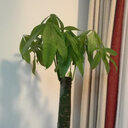Effects of Antimony Stress on Photosynthesis and Growth of Acorus calamus.
Raktažodžiai
Santrauka
This study was aimed to explore that effects of Sb on physiological parameters of Acorus calamus and the possibility of using A. calamus as a remediation plant. A. calamus potted experiments were conducted using different concentrations (0, 250, 500, 1000, and 2000 mg/kg) of antimony potassium tartrate (Sb3+) (marked as CK, T1, T2, T3, and T4, respectively) and potassium pyroantimonate (Sb5+) (marked as CK, T'1, T'2, T'3, and T'4, respectively). The effects of Sb stress (Sb3+ and Sb5+) on leaf photosynthetic pigments, biomass, photosynthetic characteristics and chlorophyll fluorescence parameters of potted A. calamus were studied. With the rise of Sb3+ concentration from T1 to T4, the leaf pigment contents (chlorophyll a, b, carotenoid), plant height, dry weight, net photosynthetic rate (Pn), stomatal conductance (Gs), evaporation rate (E), PSII maximum photochemical efficiency (Fv/Fm), and PSII electron transfer quantum yield rate (ΦPSII) of A. calamus all reduced, while intercellular CO2 concentration (Ci) significantly increased. The reduction of Pn was mainly induced by non-stomatal limitation. Chlorophyll a/b ratio increased significantly versus the control, while carotenoid/chlorophyll ratio (Car/Chl) first decreased and then increased. The leaf Chl a, Chl b, Car, plant height, dry weight, Pn, Gs, E, Fv/Fm, and ΦPSII all maximized in T'1 (250 mg/kg), but were not significantly different from the control. As the Sb5+ concentration increased from T'2 to T'4, the above indices all decreased and were significantly different from the control. Moreover, intercellular CO2 concentration (Ci) decreased significantly. The reduction of Pn was caused by non-stomatal limitation, indicating the mesophyll cells were damaged. The Car/Chl ratio was stable within 0-500 mg/kg Sb, but decreased in T3 and T4, and rose in T'3 and T'4. After Sb3+ and Sb5+ treatments, translocation factor varied 19.44-27.8 and 19.44-24.86%, respectively. In conclusion, different form Sb3+ treatment, Sb5+ treatment showed a Hormesi effect, as low-concentration treatment promoted A. calamus growth, but high-concentration treatment inhibited its growth. The two forms of Sb both caused unfavorable effects on A. calamus, but the seedlings did not die and were modestly adaptive and Sb-accumulative. A. calamus, which is easily maintained and cultivated, can serve as a good candidate for phytoremediation of water contaminated with Sb.


